This is a sponsored article in association with Liv Cycling
You don't need a gym membership or lots of time to complete a strength and conditioning workout that will help improve your on-bike performance. Natural body strength exercises can be very effective and can be done in short sessions at home or during your lunch break.
- 6 strength and conditioning tips for the busy cyclist
- Best women's road bikes for 2018: 9 of the best
- Get your nutrition right with our guide to pre-ride, during and post-ride fuelling
Alice Thomas, ambassador for Liv Cycling and personal trainer, delivers strength and conditioning talks for Liv Cycling. She's developed a routine of 10 simple exercises that offer a great all-round body strength programme, while using minimal equipment so it can be performed almost anywhere.
Just two to three sessions a week of around 15–20 minutes in duration will see big improvements in your functionality on the bike and promote long-term health in your cycling.
It’s also better to focus on natural body strength exercises like these, rather than isolated movements such as a leg curl in the gym. And while it would be beneficial to dedicate time to each individual muscle, it’s not feasible for riders who have limited training time.
1. Squats
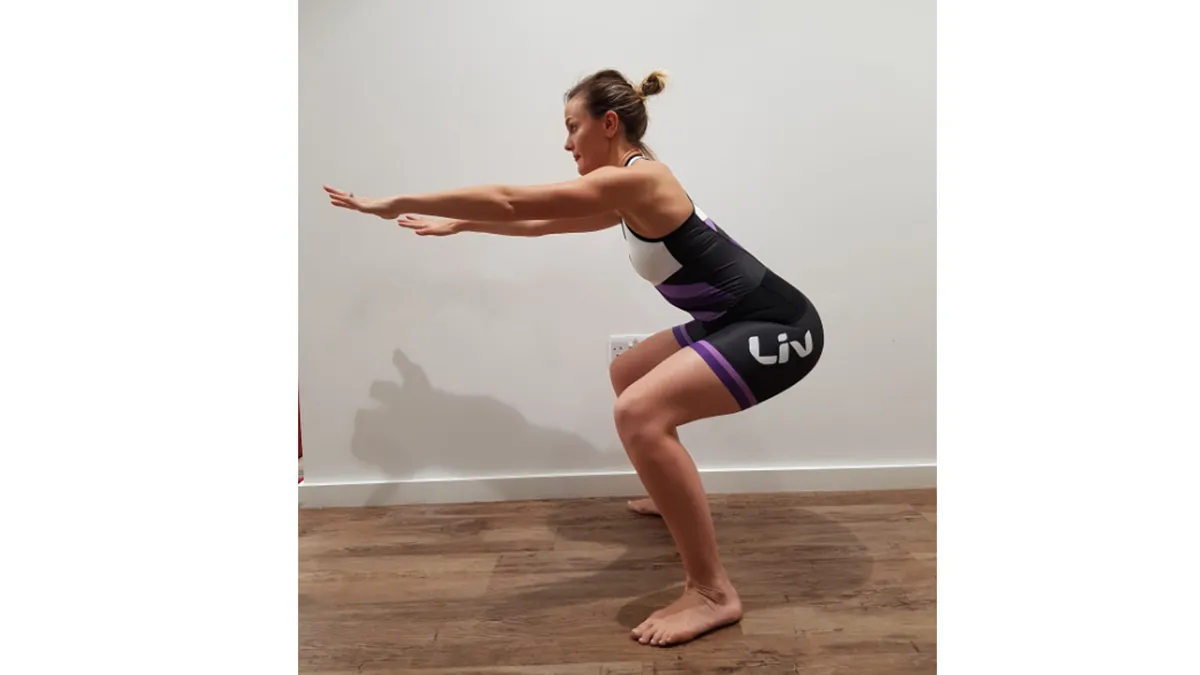
A classic move in any strength and conditioning routine, the squat helps to work on power output, strengthen the glute muscles, hip hinges and develop the posterior chain (glutes,hamstrings etc).
Body positioning and technique
- Stand with your feet just over shoulder width apart. Feet at a 0–45 degree angle (or however comfortable)
- Shoulders back and down, looking straight ahead
- Engage your glutes and core
- Push hips back over the heels, until your knees are at 90 degrees (see image above) — imagine sitting on a chair behind you!
- Push through the heels to drive back to standing position
- Repeat for three sets of 8–12 repetitions
Muscles worked: Core, glutes, quads, hamstrings
2. Romanian deadlifts

Cyclists tend to be quad dominant, so the Romanian deadlift switches the muscle focus to hamstrings. It is a unilateral movement that helps to build balance and recruitment of muscles, helping to avoid injury.
Body positioning and technique
- Stand with a slight bend of the knee
- Shoulders back and down
- Hinge at the hip and push bum back
- Run your hands down your legs until your knee bends
- Push back up to standing from your heels
- Drive glutes and hips through and thrust forward
- Repeat for three sets of 8–12 repetitions
Muscles worked: Hip hinge, glutes, hamstrings and core stability
3. Reverse lunges
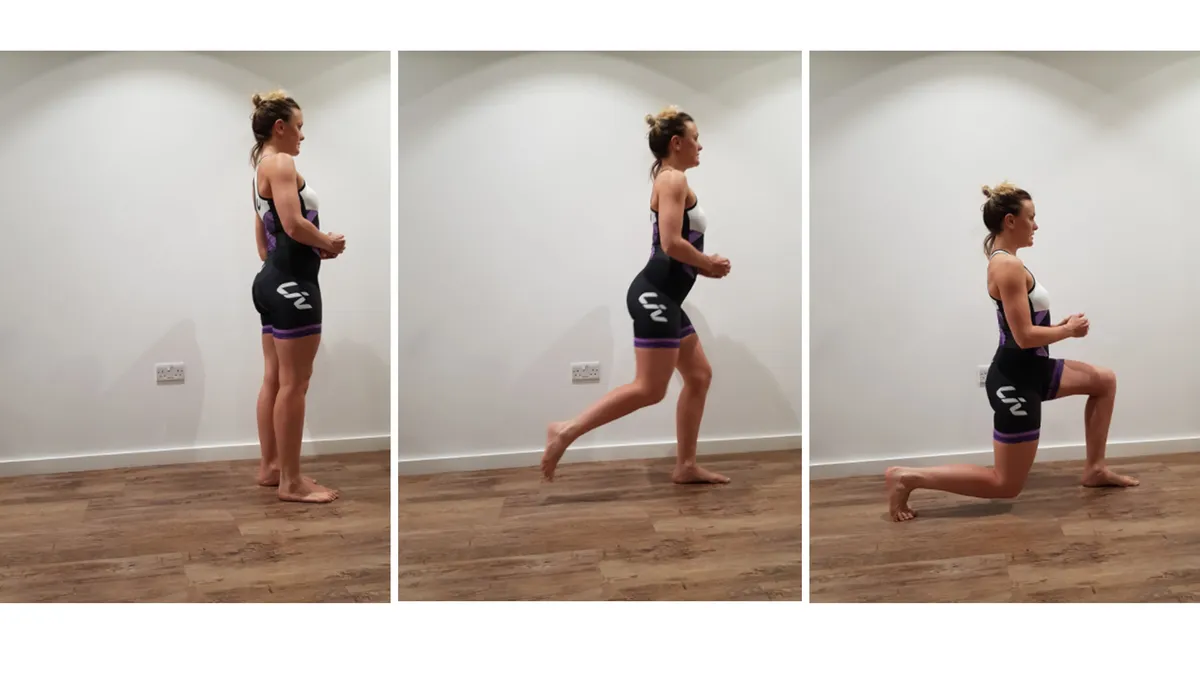
Lunges are a key strength exercise for running and cycling, and to help avoid injury, working on muscle recruitment and balance. Work on the ‘acceleration’ phase, by stepping back and then driving back up to standing.
Body positioning and technique
- Stand hip-width apart, then take a big step back so your knees are at 90 degrees
- Make sure the front knee is behind the toes
- Back knee movement is down — think about sinking down towards the ground
- Keep weight on the front knee
- Squeeze the glutes (bum), keep your hips tucked under
- Push with your front heel to standing
- Repeat for three sets of 8–12 repetitions for each leg
Muscles worked: Hamstrings, glutes
4. Bulgarian squat
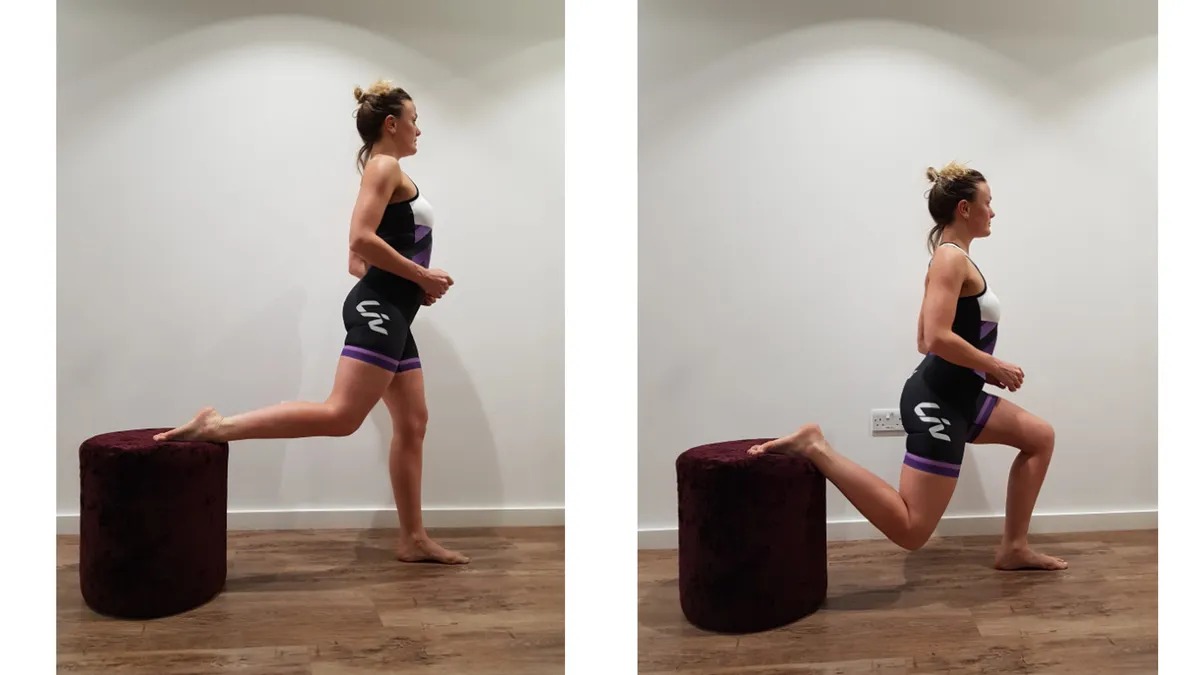
This exercise focuses on strengthening the glute muscles, as well as working the hip flexors, which is beneficial for runners and cyclists who have tight hip flexors.
Body positioning and technique
- Begin in the standing position, with one foot behind on a bench around knee height
- Shoulders back and down
- The front knee should be at 90 degrees
- Slowly, and in a controlled manner, move the body down towards the floor
- Push back up with the front heel
- Repeat for three sets of 8–12 repetitions
Muscles worked: Glutes, hamstrings, core
5. Glute bridge
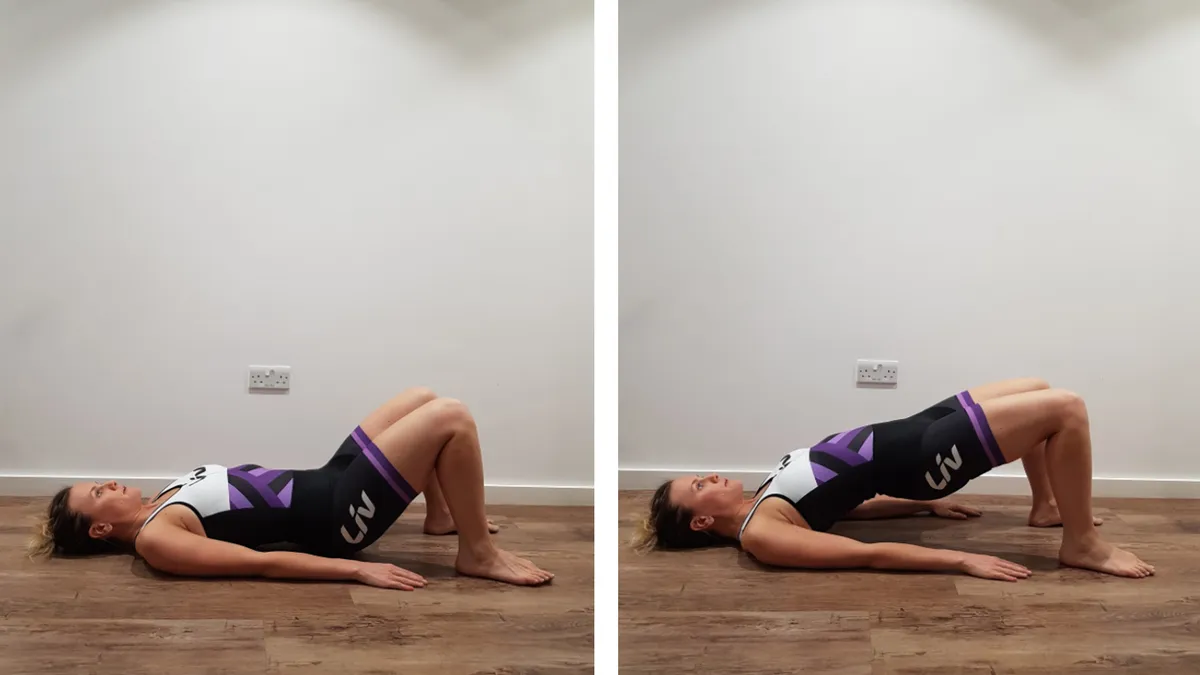
Cyclists are quad dominant, so this one really helps to strengthen the glutes.
Body positioning and technique
- Lie on your back with feet on the floor, hip-width apart and close to the bum
- In a slow controlled movement, drive your hips up to the ceiling by pushing through your heels
- Ensure you control the movement on the way down — don’t touch the floor, just hover above the ground
- Timing is 1 second up, 3 seconds down
- Repeat for three sets of 8–12 repetitions
Muscles worked: Glutes and hamstrings
6. Lateral lunge
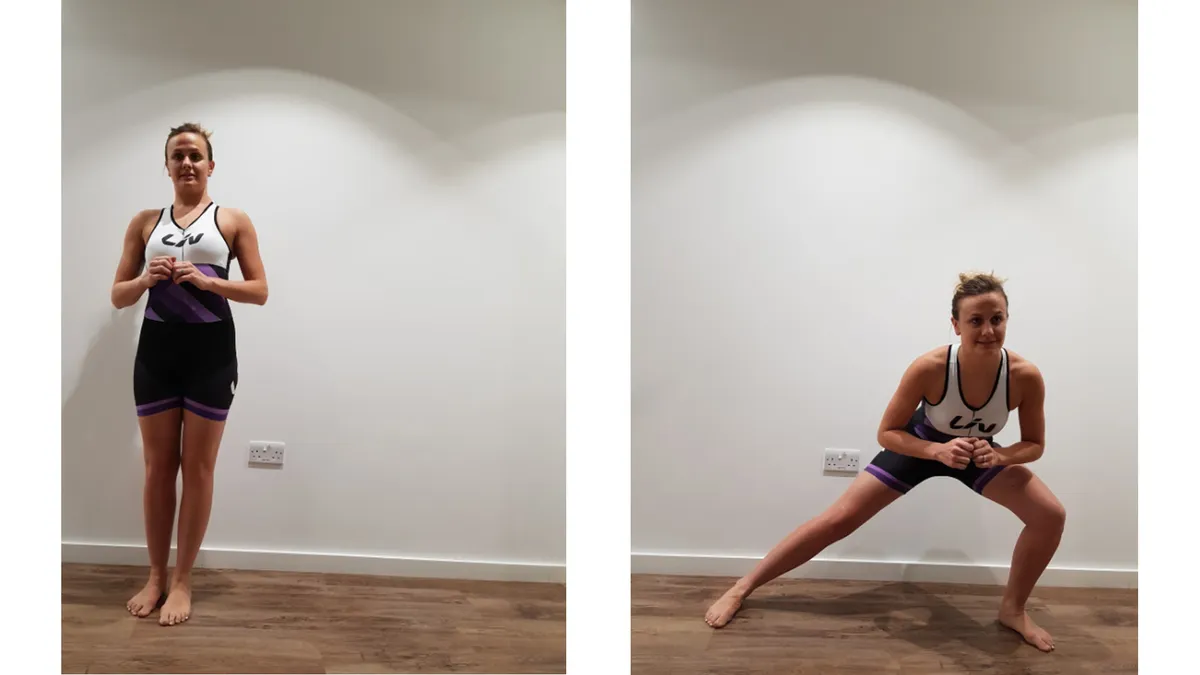
This exercise focuses on recruiting muscles that aren’t in the forward motion, used during running and cycling.
Body positioning and technique
- Start in a standing positioning and take a big step to the side, hinge your hips back with your chest and head up
- Drop the knee between 45–90 degrees
- Driving through the heel, push yourself back up to standing
- Repeat for three sets of 8–12 repetitions
Muscles worked: Hips, glutes, adductors and abductors
7. Push ups

This is another classic exercise that can be done anywhere with just your bodyweight.
Beneficial for triathletes, it works your upper body and core stability while the limbs are moving. Very much focused on the arms and core (the body's powerhouse).
Body positioning and technique
- Start by placing your hands on the ground, just outside shoulder-width apart (like a high plank)
- Maintain tension throughout the body (don’t drop the hips) and slowly lower your body towards the ground, then push back up to the starting position
- If this is too much of a challenge, start on your knees
- Repeat for three sets of 8–12 repetitions
Muscles worked: Upper body (mainly chest) and core
8. Dead bugs
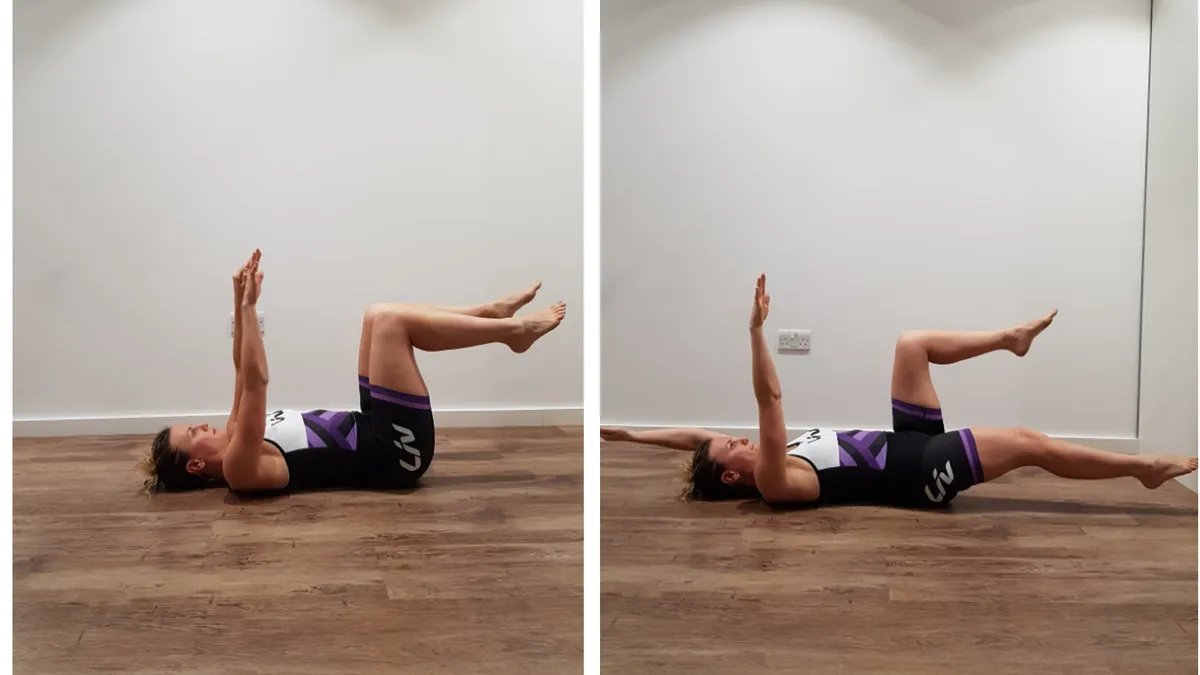
The dead bug is a core stability exercise that teaches you to move your hips and shoulders without involving the spine. It requires plenty of co-ordination, so practice in slow and controlled movements. Start off with your arms only, and then progress to lowering the legs.
Here are some top tips for this exercise, because it can be tricky: don’t twist into it, keep the spine flat against the floor at all times and practice with just the arms before incorporating the legs.
Body positioning and technique
- Lie on your back with knees in a table top position (90 degrees at the knee and hip)
- Hold your arms out straight towards the ceiling, pushing the lower back into the ground and sucking your belly button in
- Slowly lower your right arm and left leg to just above the ground
- Ensure your spine is flat against the floor without doming
- Bring your arm back up and repeat with the other arm/leg
- Repeat for three sets of 8–12 repetitions
Muscles worked: Core, upper body and glutes
9. Plank
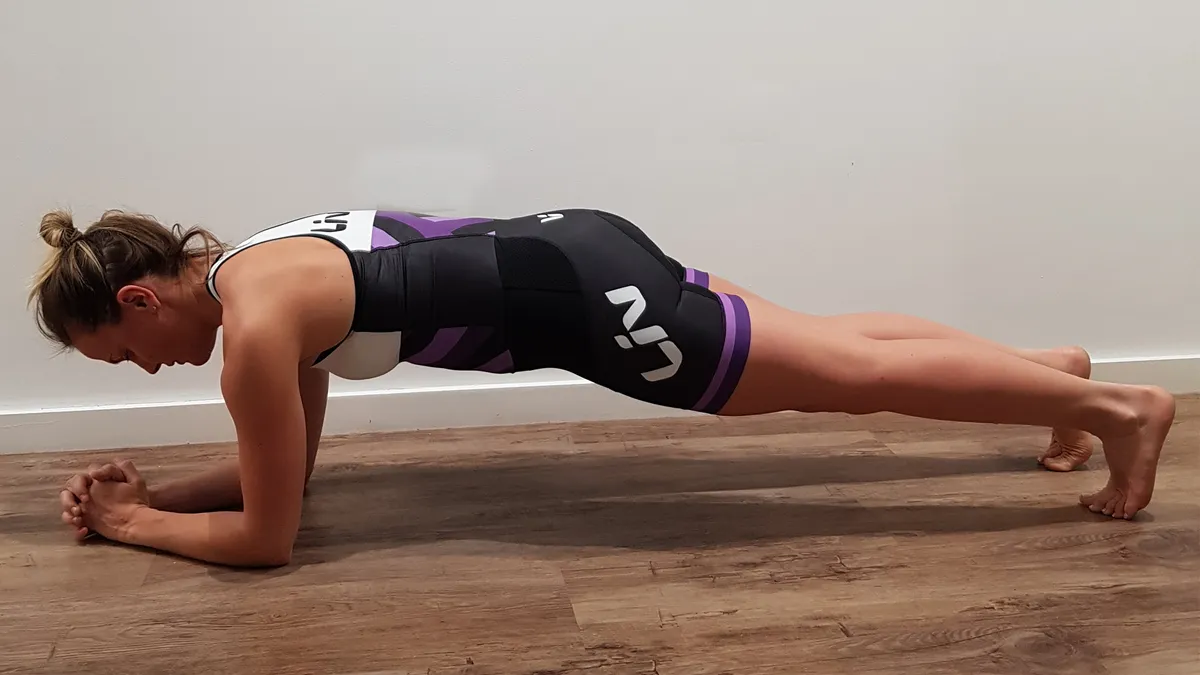
Cyclists are often quad dominant, but the core is the body's powerhouse, so it is important for cyclists to have a strong core. Planks are a stability exercise where tension is maintained throughout the body — so don’t drop the hips!
Body positioning and technique
- Start on your forearms, elbows just underneath the shoulders
- Hold tension in the whole of your body, being careful not to drop the hips or hold them too high
- Hold this exercise for 30 seconds to a minute, depending on how it feels
- Bonus: try moving between your regular plank and a high plank as an extra challenge (using straight rather than bent arms)
Muscles worked: Core, upper body, glutes
10. Bear crawl hold
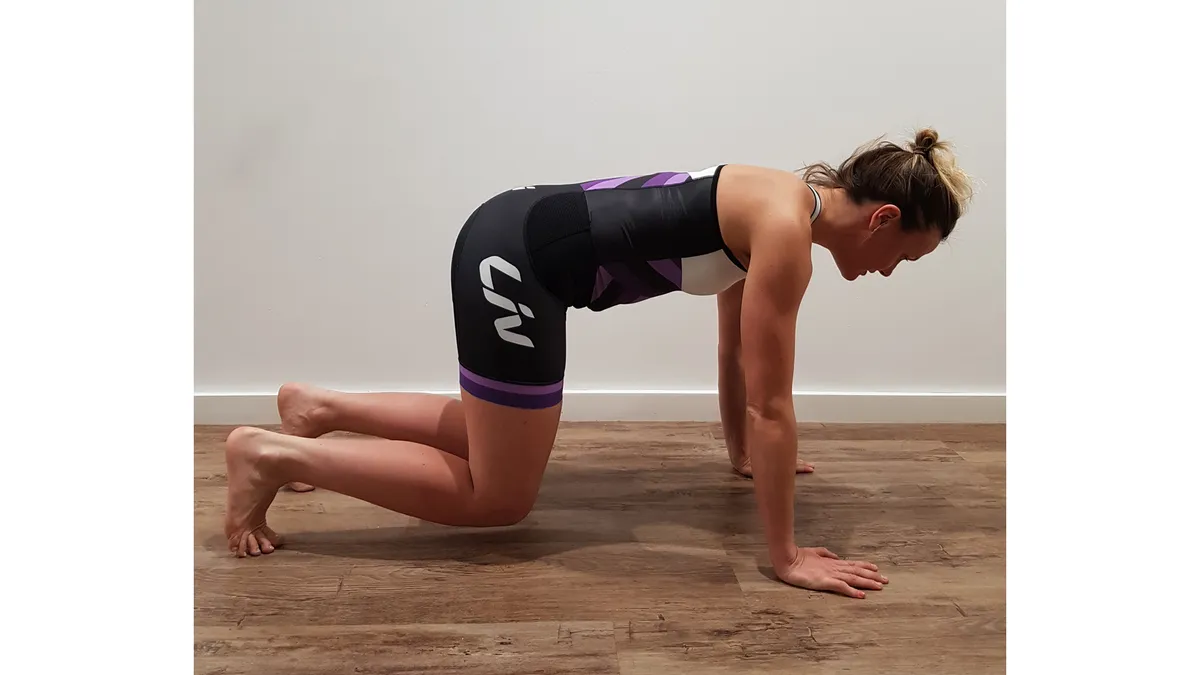
This is a core and shoulder stability strength exercise. You’re building tension in your quads, as well as working on your coordination.
Body positioning and technique
- Start on all fours, with your pelvis tucked in. Hands should be under your shoulders
- Knees should be situated under the hips at 90 degrees and 1-inch above the ground
- Make sure the glutes and core are engaged
- Keep the spine neutral from head to tail
- Hold this exercise for 30 seconds to a minute
Muscles worked: Core, upper body, glutes
Looking for tips on how to incorporate this routine into a busy schedule? Liv's Ambassadors have shared their favourite ways of fitting in a workout around a busy lifestyle.
